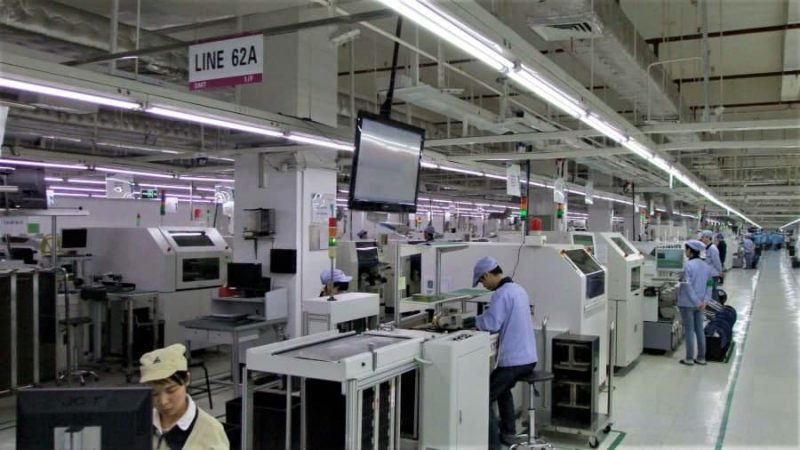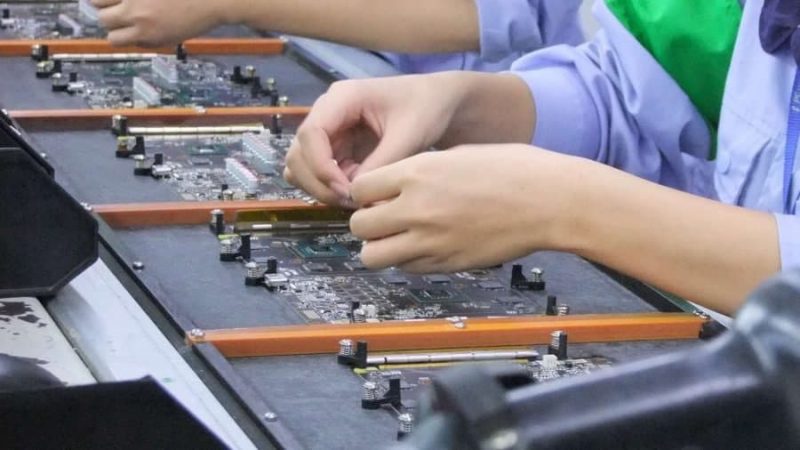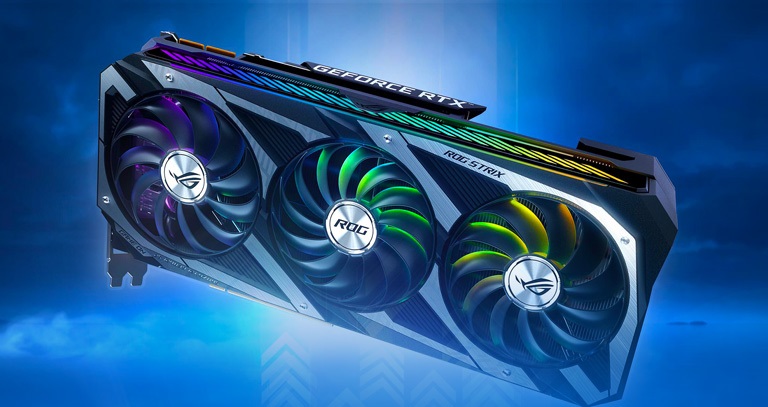How Is Graphics Manufacturing; The Magic Of Today`s Science
Whether You Are An Nvidia Or AMD User, Any PC Gamer May Be Eager To Learn The Magic Of Creating Their Own Computer Graphics Card. From Solders, Screws, And Tests To PC Partner Product Line Robots In This Article.
PC Partner has been a motherboard supplier since 1997. The company is the largest manufacturer of AMD graphics cards and also produces Nvidia. PC Partner produces about 400,000 graphics cards a month, and that number will be even more impressive after seeing the manufacturing process.
Each PC Partner graphics production line can produce an average of about 4,000 units per day. But each line is not limited to one product, and its product may change at the time of demand. Changing the production lines of similar cards only takes 5 minutes, which eventually reaches 15 minutes for different cards, which is extraordinary.
Factory environment

Graphics card manufacturing process
The only sound that can hear in the factory space is related to the equipment and production machines. Automated systems heavily monitor the production process, and the statistics of each product are stored in the system for months. But in this factory, in addition to production, tests are also performed before launching the production line.
Graphics card production process
One part of the manufacturing process that PC Partner itself does not do is the production of PCBs. The company has the design parts of this circuit, but their production is the responsibility of other factories. These boards are mainly imported to PC Partner to be in the graphics card production line. Each PCB is labeled and placed in a fixed frame that varies with board size before connection.

Graphics card manufacturing process
The first step of the main production process is soldering on the PCB. Many points are soldered on the board to connect the next components on them. Pick And Place devices play a major role at this stage.
These machines place the smallest components across the board at breakneck speed. Special pulleys operate these devices. A team of engineers assembles these pulleys at the beginning of each production line according to the specifications required for that line.
After the smallest parts are connected to the PCB, a process called re-soldering is performed to ensure the strength of the joints. Then after the boards have cooled, they are passed through an automatic optical inspection (AOI) machine to ensure 100% that each component is in the correct position.
After this step, the boards are reversed to do the same process for the other party again. At this point, we can see a simple print board become a graphics giant. But this is not the end!

Graphics card manufacturing process
Larger components such as capacitors, electrical connections, and ports must now connect, where humans are directly involved. Many of these components are attached by hand instead of machines before passing through wave soldering machines. After passing through the soldering machine, all the boards are placed in a PCB cleaning machine that uses a material with a neutral pH to ensure that the solder wastes are removed. Toxic substances are used at this stage, but environmental concerns are eliminated with the help of filters.
Experiment on the graphics card

Graphics card manufacturing process
Finally, the GPU cooler is connected, and the final graphics card is taken off the production line. Any graphics card that leaves the PC Partner product line enters the testing process directly. In this part, the cards are pressed in terms of software to check their efficiency fully. This test uses various programs, such as the Heaven 4.0 benchmark.
In three stages of automatic optical inspection, visual inspection, and GPU testing, if for any reason a problem is detected in the card, it is sent directly to the troubleshooting site and returned to the production line after repair. Parts that are not repairable will be transferred to recycling bins.
Finally, the graphics cards are packed with cables, adapters, and driver CDs before being shipped to be routed to personal computers.

Graphics card manufacturing process
These steps were the direct mechanism of the production process of each of our graphics cards, but there are many other things before production is finalized. PC Partner has also included electromagnetic compatibility, thermal and acoustic testing, which allows the company to test the tolerance and performance of the product before completing production on the main production line.
The $ 1.5 million EMC workshop, which has a Half Life-like environment, is an isolated room where devices are tested individually to meet all electromagnetic standards.

Graphics card manufacturing process
Here, too, they test the electrical stability of their products. They deliberately unplug computers and components at once to measure their resistance. One of the coolest devices in the EMC lab is putting the graphics card at 85 degrees Celsius and 85 percent humidity for 144 hours to restore its 5-year lifespan. This is done using a sophisticated algorithm that allows the company to gather information about how the graphics card works and lasts.

Graphics card manufacturing process
PC Partner also has an acoustic chamber to perform sound tests on graphics cards and minicomputers. With a shallow noise level of 12 to 13 decibels, the company can measure the vibration sound generated by the various fans and coolers of the devices.
These chambers absorb all the reflected sound waves and strongly block the outside sound. As you can see, there are many steps taken by robots and humans to get a graphics card to your computer, each of which takes hours of study and effort. We hope you find this article useful and that we love your feedback on this difficult and engaging process.
Frequently Asked Questions
Is the graphics card production line fully automated?
- No, humans are involved in various stages and experiments.
Is it expensive to create a graphics card production line?
- Graphics card production line equipment and labs are costly.











